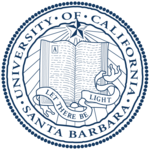University of California, Santa Barbara College of Engineering
1964 establishments in CaliforniaEngineering universities and colleges in CaliforniaUniversities and colleges established in 1964University of California, Santa Barbara colleges and schoolsUniversity subdivisions in California
The College of Engineering (CoE) is one of the three undergraduate colleges at the University of California, Santa Barbara. As of 2021, there were approximately 150 faculty, 1,650 undergraduate students, and 750 graduate students. According to the Leiden Ranking, engineering and physical sciences at UCSB is ranked #1 among public universities for top 10% research citation impact. According to the National Research Council rankings, the UCSB engineering graduate research program in Materials was ranked #1 and Chemical Engineering ranked #5 in the nation among public universities.
Excerpt from the Wikipedia article University of California, Santa Barbara College of Engineering (License: CC BY-SA 3.0, Authors).University of California, Santa Barbara College of Engineering
El Colegio Road,
Geographical coordinates (GPS) Address Website Nearby Places Show on map
Geographical coordinates (GPS)
| Latitude | Longitude |
|---|---|
| N 34.413868 ° | E -119.841214 ° |
Address
University of California, Santa Barbara
El Colegio Road 552
93106
California, United States
Open on Google Maps






